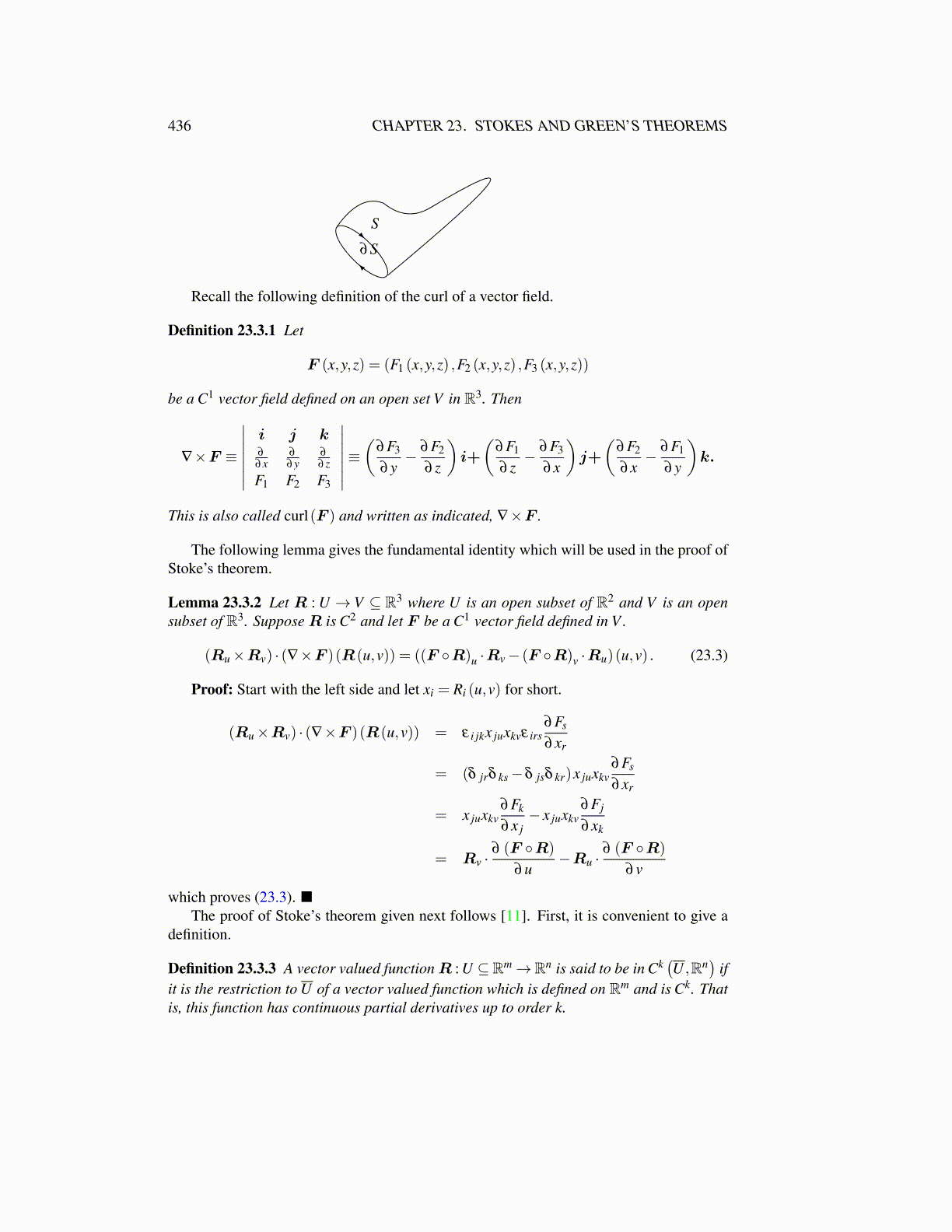
436 CHAPTER 23. STOKES AND GREEN’S THEOREMS
∂S
S
Recall the following definition of the curl of a vector field.
Definition 23.3.1 Let
F (x,y,z) = (F1 (x,y,z) ,F2 (x,y,z) ,F3 (x,y,z))
be a C1 vector field defined on an open set V in R3. Then
∇×F ≡
∣∣∣∣∣∣∣i j k∂
∂x∂
∂y∂
∂ z
F1 F2 F3
∣∣∣∣∣∣∣≡(
∂F3
∂y− ∂F2
∂ z
)i+
(∂F1
∂ z− ∂F3
∂x
)j+
(∂F2
∂x− ∂F1
∂y
)k.
This is also called curl(F ) and written as indicated, ∇×F .
The following lemma gives the fundamental identity which will be used in the proof ofStoke’s theorem.
Lemma 23.3.2 Let R : U → V ⊆ R3 where U is an open subset of R2 and V is an opensubset of R3. Suppose R is C2 and let F be a C1 vector field defined in V .
(Ru×Rv) · (∇×F )(R(u,v)) = ((F ◦R)u ·Rv− (F ◦R)v ·Ru)(u,v) . (23.3)
Proof: Start with the left side and let xi = Ri (u,v) for short.
(Ru×Rv) · (∇×F )(R(u,v)) = ε i jkx juxkvε irs∂Fs
∂xr
= (δ jrδ ks−δ jsδ kr)x juxkv∂Fs
∂xr
= x juxkv∂Fk
∂x j− x juxkv
∂Fj
∂xk
= Rv ·∂ (F ◦R)
∂u−Ru ·
∂ (F ◦R)
∂v
which proves (23.3). ■The proof of Stoke’s theorem given next follows [11]. First, it is convenient to give a
definition.
Definition 23.3.3 A vector valued function R : U ⊆Rm→Rn is said to be in Ck(U ,Rn
)if
it is the restriction to U of a vector valued function which is defined on Rm and is Ck. Thatis, this function has continuous partial derivatives up to order k.